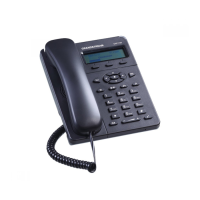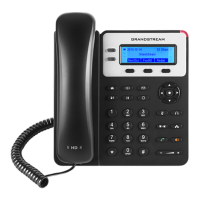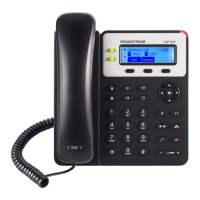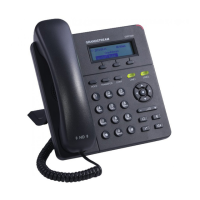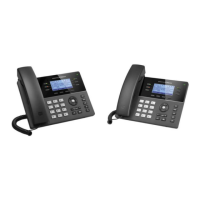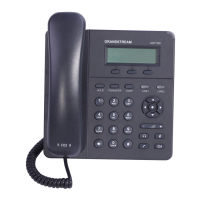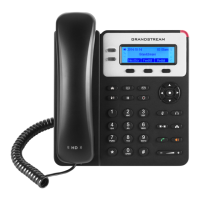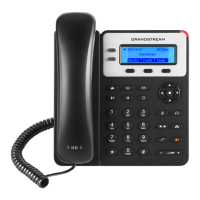FIRMWARE VERSION 1.0.8.4 GXP1100/GXP1105 USER MANUAL Page 40 of 53
Enter the PPPoE account ID.
Enter the PPPoE Password.
Enter the PPPoE Service Name.
Enter the IP address when static IP is used.
Enter the Subnet Mask when static IP is used for IPv4.
Enter the Default Gateway when static IP is used for IPv4.
Enter the DNS Server 1 when static IP is used for IPv4.
Enter the DNS Server 2 when static IP is used for IPv4.
Enter the Preferred DNS Server for IPv4.
Allows users to configure the appropriate network settings on the phone to
obtain IPv6 address. Users could select "Auto-configured" or "Statically
configured" for the IPv6 address type.
Enter the static IPv6 address when Full Static is used in "Statically configured"
IPv6 address type.
Enter the IPv6 prefix length when Full Static is used in "Statically configured"
IPv6 address type.
Enter the IPv6 Prefix (64 bits) when Prefix Static is used in "Statically
configured" IPv6 address type.
Enter the DNS Server 1 for IPv6.
Enter the DNS Server 2 for IPv6.
Enter the Preferred DNS Server for IPv6.
Network -> Advanced Settings
Allows the user to enable/disable 802.1X mode on the phone. The default
value is disabled. To enable 802.1X mode, this field should be set to
EAP-MD5.
Enter the Identity for the 802.1X mode.
Enter the MD5 Password for the 802.1X mode.
Upload 802.1X CA certificate to the phone; or delete existed 802.1X CA
certificate from the phone.
802.1X Client Certificate
Upload 802.1X Client certificate to the phone; or delete existed 802.1X Client
certificate from the phone.
Specifies the HTTP proxy URL for the phone to send packets to. The proxy
server will act as an intermediary to route the packets to the destination.
Specifies the HTTPS proxy URL for the phone to send packets to. The proxy

